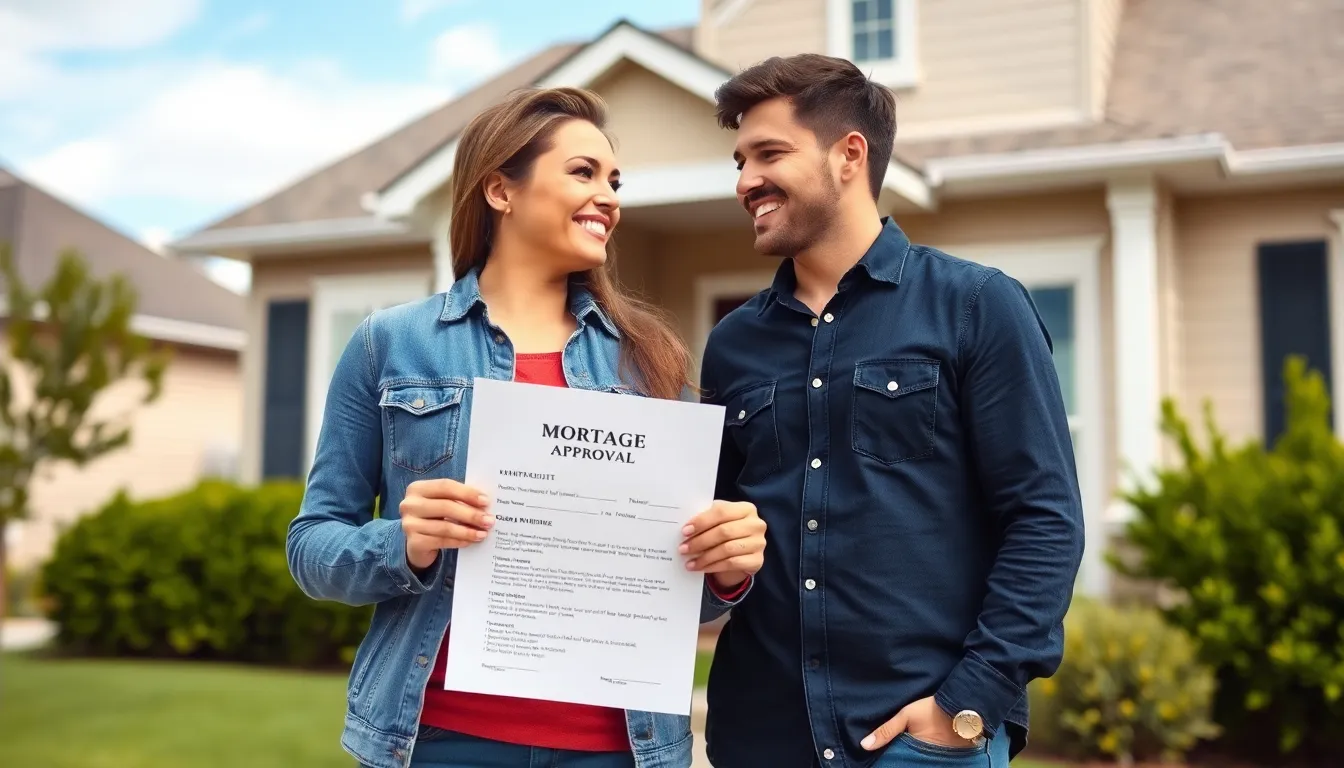Table of Contents
ToggleBuying a home is like embarking on a thrilling roller coaster ride—exciting yet a bit nerve-wracking. One of the first big drops? The down payment for your mortgage. This upfront cost can feel like a mountain to climb, but it doesn’t have to be a scary beast lurking in the shadows. With the right knowledge, it can transform into a manageable stepping stone toward homeownership.
Understanding Down Payment For Mortgage
Down payments represent a crucial component in the home buying process. Typically, they range from 3% to 20% of the home’s purchase price. Lenders often require this amount to ensure buyers have a financial stake in the property.
Higher down payments reduce monthly mortgage payments. A lower loan-to-value ratio lowers the risk for lenders. Buyers who put down 20% or more avoid private mortgage insurance (PMI), resulting in additional savings.
Assessing one’s financial situation is essential before deciding on a down payment. Individuals should consider their savings, monthly budget, and long-term housing goals. Some programs offer assistance for first-time buyers, such as grants or loans that can minimize the down payment requirement.
Homes priced at $300,000 could mean a down payment of $9,000 at 3% or $60,000 at 20%. Knowing these numbers helps buyers plan. It’s important to remember that down payment isn’t the only upfront cost; closing costs may also arise.
Down payment requirements may vary with loan types, such as conventional, FHA, or VA loans. FHA loans allow down payments as low as 3.5%. VA loans, intended for veterans, might not require any down payment at all.
Making informed decisions about down payments can simplify the home buying experience. Understanding the implications of the chosen amount impacts mortgage rates and monthly payments. Knowledge about down payments ultimately empowers buyers on their journey to homeownership.
Importance Of A Down Payment

A down payment plays a crucial role in the mortgage process, acting as a financial commitment from the buyer. Understanding its significance simplifies the path to homeownership.
Impact On Loan Approval
Lenders assess the down payment amount when considering loan applications. A larger down payment increases the likelihood of securing approval since it demonstrates financial stability. Buyers with down payments of 20% or more often enjoy better interest rates. Lower down payments may lead to stricter scrutiny and require private mortgage insurance. Ensuring a solid down payment shows lenders that buyers have skin in the game, which can ease the approval process.
Effect On Monthly Payments
Down payment size directly influences monthly mortgage payments. Making a larger down payment reduces the loan amount, leading to lower monthly payments over time. Buyers can save significantly on interest costs with higher upfront payments. Lower payments result in improved cash flow, allowing for easier budgeting. Avoiding private mortgage insurance is another benefit of larger down payments, further decreasing monthly expenses. Thus, making an informed down payment choice impacts overall affordability.
Types Of Down Payments
Various types of down payments can significantly impact the home buying process. Understanding these options is essential for potential buyers seeking to achieve homeownership.
Conventional Loans
Conventional loans typically require a down payment between 3% and 20% of the home’s purchase price. Lower down payments may lead to additional costs like private mortgage insurance (PMI). Buyers who opt for a larger down payment often benefit from reduced monthly payments and better interest rates. Lenders consider larger down payments a sign of financial stability, which can enhance loan approval chances. Assessing personal finances remains crucial when deciding on a down payment for this loan type.
FHA Loans
FHA loans attract many first-time buyers due to their low down payment requirement, which can be as low as 3.5%. These loans are backed by the Federal Housing Administration, providing more flexibility with credit scores. Buyers can take advantage of lower down payments while still maintaining a reasonable monthly mortgage payment. FHA loans also come with specific regulations regarding mortgage insurance, impacting long-term affordability. Understanding these features helps buyers make informed decisions about their financial commitments.
VA Loans
VA loans offer significant advantages for eligible veterans and active-duty service members. No down payment is required for this loan type, making homeownership more accessible. VA loans come with competitive interest rates and do not require PMI, resulting in lower monthly payments. The U.S. Department of Veterans Affairs backs these loans, emphasizing the commitment to support veterans. Familiarity with the requirements and benefits of VA loans can help buyers streamline their path to homeownership.
Strategies For Saving A Down Payment
Saving for a down payment requires a strategic approach to managing finances effectively.
Budgeting Tips
Establishing a budget serves as a foundational step. Identify monthly income and expenses to gain visibility into spending habits. Allocate a specific portion of income towards savings each month. Cutting unnecessary expenses, like dining out or subscription services, can free up additional funds. Setting realistic savings goals also helps track progress over time. Tracking expenses aids in finding areas to save; use apps or spreadsheets for better organization. Reviewing and adjusting the budget regularly ensures alignment with financial goals.
Assistance Programs
Assistance programs offer valuable resources for potential homebuyers. Various programs, often sponsored by government agencies, can provide down payment assistance. First-time home buyer programs commonly offer grants or low-interest loans for down payments. Local and state agencies also administer specific initiatives targeting low-income buyers. Researching eligibility requirements is essential, as they may vary by location and program. Utilizing these programs can significantly ease the financial burden of saving for a down payment.
Common Myths About Down Payments
Many believe that a 20% down payment is the only option for purchasing a home. This misconception often discourages potential buyers. Down payments can actually range from 3% to 20%, depending on the loan type. FHA loans allow down payments as low as 3.5%, making homeownership accessible for many.
Another prevalent myth suggests that buyers must save years to afford a down payment. With various assistance programs available, this isn’t always true. Many local and national initiatives provide grants and low-interest loans, which can significantly reduce the saving burden.
Some think that a larger down payment guarantees loan approval. While a significant down payment can improve chances, lenders also assess credit scores and income stability. Buyers should consider all aspects of their financial health when applying for a mortgage.
It’s also common to hear that putting more money down eliminates the need for mortgage insurance. Though this holds true in many cases, it’s important to understand how that varies by loan type. For instance, VA loans require no down payment and don’t have PMI, offering unique benefits for eligible veterans and service members.
Lastly, potential homeowners might underestimate the impact of down payment size on monthly payments. Larger amounts directly reduce the loan principal, leading to lower monthly costs and interest savings over time. Understanding these myths helps demystify the down payment process and empowers buyers in their journey toward homeownership.
Navigating the journey to homeownership can be daunting but understanding the role of down payments makes it more manageable. By assessing financial situations and exploring various loan options buyers can find a path that suits their needs.
The flexibility in down payment requirements across different loan types opens doors for many potential homeowners. With the right strategies and resources available buyers can ease the burden of saving and confidently take steps toward their dream home.
Ultimately it’s about making informed choices that align with individual financial goals. Embracing this knowledge empowers buyers to approach the mortgage process with confidence and clarity.





